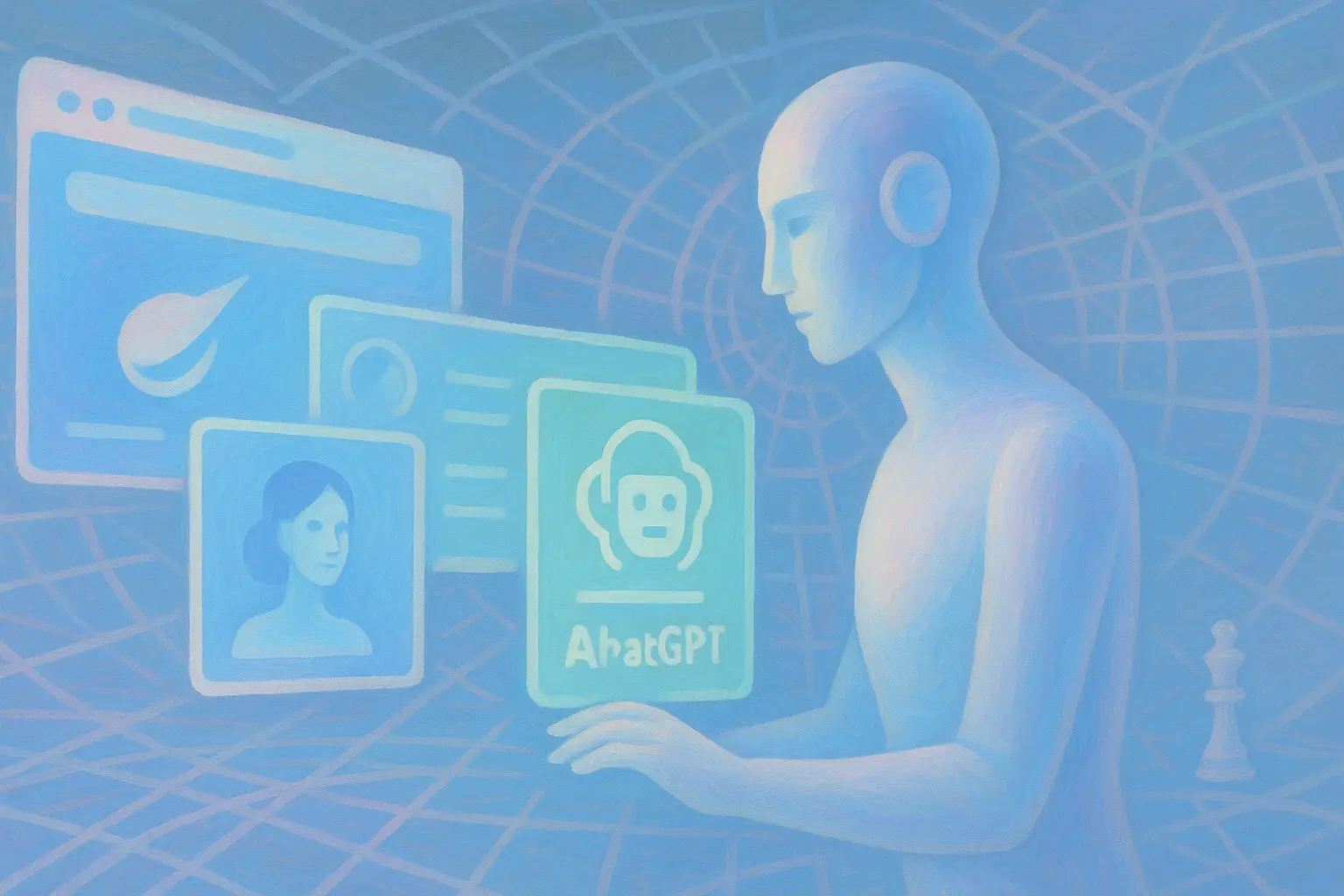
SLMs are Better Than LLMs for Niche Tasks
Table of Contents
- Introduction
- Understanding Language Models at a Glance
- Advantages of Small Language Models
- Why SLMs Excel for Niche Tasks
- Real-Life Examples and Use Cases
- Comparing Costs and Performance: A Closer Look
- Tips for Getting the Most Out of SLMs
- Looking Ahead: The Future of SLMs
- Conclusion
- Frequently Asked Questions (FAQs)
Introduction
When it comes to language models, there’s been a lot of buzz about the giants in the field. Large language models (LLMs) like GPT-3 have captured headlines for their impressive abilities. Yet, when it comes to specific jobs or niche applications, small language models (SLMs) might be the unsung heroes. Today, I want to explore why SLMs often hold the upper hand for niche tasks. We will break down the concepts in everyday language and make it easy to grasp for everyone, whether you are an AI enthusiast or someone curious about the future of technology.
This article is an exploration of how small language models, with their lower cost, faster response times, and ease of use, can be more practical than large language models in many scenarios. We will walk through comparisons, illustrate our discussion with tables and examples, and answer some common questions at the end.
Generate Veo 3 JSON, Fast
Create structured, optimized JSON for Veo 3 in minutes. Clear fields. Correct syntax. Consistent results.
Open Veo 3 JSON GeneratorUnderstanding Language Models at a Glance
First, let us understand what language models are. In simple terms, a language model is a computer program that learns from vast amounts of text. It uses this learning to generate new text, answer questions, translate languages, or even conduct conversations. There are different types of language models:
- Large Language Models (LLMs): These are the models most of us hear about in the news. They contain billions of parameters that allow them to generate remarkably detailed responses. They are powerful but also expensive and bulky.
- Small Language Models (SLMs): In contrast, these models come in a smaller, lighter form. They have much fewer parameters and are tuned to perform specific tasks well. They can be deployed easily, even on devices like smartphones.
Imagine the difference between a high-end sports car and a nimble compact car. Both have their own strengths. The sports car (LLM) is powerful but requires a lot of fuel and maintenance. The compact car (SLM) is efficient and perfect for quick runs around the city. For simple, everyday tasks, the compact can do the job quite well.
Advantages of Small Language Models
Cost-Effectiveness
One of the biggest advantages of SLMs is how light they are on the wallet. Training and running these models cost much less compared to LLMs. Here’s why:
- Training Costs: Imagine you have two different workshops. One workshop uses expensive tools and materials (LLMs), while the other uses basic but efficient tools (SLMs). Training a large model can run into millions of dollars because it demands powerful hardware and energy. In contrast, a model like DistilBERT might only take a few thousand dollars to train.
- Operational Costs: When these models are put to use, the large ones require top-notch hardware. Running them on multi-GPU systems can be very expensive. SLMs, however, can run smoothly on simpler, more affordable machines.
Below is a simplified comparison table:
| Feature | Large Language Models (LLMs) | Small Language Models (SLMs) |
|---|---|---|
| Training Cost | Millions of dollars | Thousands of dollars |
| Hardware Needs | High-end multi-GPU setups | Standard CPUs |
| Inference Speed | Slower in real-time | Faster response times |
| Deployment | Bulky, needs high resource | Lightweight, fits on devices |
This table shows that for targeted use cases—where spending too much on resources is not ideal—SLMs come out as the clear winner.
Faster Inference
In many applications, speed is key. SLMs can process input and provide an output quicker because they have fewer computations to perform.
- Real-Time Tasks: For tasks that require instant answers such as chatbots or real-time translation, every millisecond counts. SLMs offer faster inference times and thus are ideal for such applications.
- Efficiency in Communication: When interacting with a device, you want responses without long delays. SLMs can be the engine behind these quick interactions, making sure that your experience remains smooth and engaging.
Edge Device Deployment
SLMs are lightweight enough to run on edge devices, like smartphones, smartwatches, and IoT devices. This feature is a significant advantage because it means:
- Offline Functionality: Tasks can be performed even without a constant internet connection. Think of language filtering on your mobile phone or voice assistants working smoothly on a smart device.
- Privacy: Since the data does not have to travel far, deploying SLMs directly on a device can help protect personal information.
- Lower Latency: Running models directly on your device reduces lag. This is a practical benefit for applications like real-time text translation in mobile apps or quick responses in interactive voice systems.
Why SLMs Excel for Niche Tasks
SLMs may lack the sheer volume of knowledge contained in LLMs, but they have evolved to be specialists in many areas. It is the perfect example of quality over quantity.
Focused Abilities
SLMs can be fine-tuned for very specific tasks. This makes them ideal in cases where you don't need a model that knows a little bit about everything but rather one that excels in one area. Here are some niche tasks where SLMs shine:
- Customer Support Chatbots: For many small businesses, training a customer service bot that can handle routine questions is a great application. An SLM can be customized to answer queries related to specific products or issues without the need for extensive resources.
- Medical or Legal Advice: While not a substitute for professional consultation, SLMs trained on medical or legal documents can provide a basic level of guidance. They offer quick responses based on a refined dataset targeted at the relevant field.
- Content Filtering: In scenarios where content needs to be moderated or flagged, a focused model can be deployed to recognize specific patterns without the additional overhead of a large model.
Prompt Engineering: Guiding the Model
One of the interesting aspects of using SLMs for niche tasks is the role of prompts. Prompt engineering is like giving the model precise instructions on what task to perform. When done properly, it leads to excellent outcomes even when dealing with smaller models.
- What is Prompt Engineering? In simple terms, prompt engineering involves designing a series of questions or phrases that direct the model’s responses. Rather than retraining the whole model, you provide a set of guidelines in the prompt.
- Example: Suppose you have an SLM tailored for travel advice. A prompt might be, “Give me a three-day itinerary for Paris that includes free attractions.” The model then uses its training to focus on this specific instruction.
- Why It Works: When models are small, every bit of guidance helps. A clear, well-crafted prompt means that even with fewer parameters, the model can deliver a sharp, tailored answer. You can learn more about prompt engineering on the Wikipedia page.
Real-World Efficiency
For small businesses and individuals who cannot invest in heavy computational resources, SLMs provide a viable alternative. They offer dependable performance without the need for expensive setups. Their efficiency means they can run on standard desktop computers, tablets, or even smartphones, making advanced AI available to almost everyone.
Real-Life Examples and Use Cases
To ground this discussion in reality, let’s consider some examples where SLMs have made a real difference.
Customer Support for Small Businesses
Imagine a small online shop that receives a steady stream of customer inquiries. The owner employs an SLM to handle common queries about shipping, product details, and return policies. The model is trained on the shop’s standard responses and, thanks to low inference time, replies instantly. This reduces waiting times for customers and helps the business run smoothly without the need for a live person at every moment.
Mobile Translation Apps
In many parts of the world, people rely on mobile apps to translate languages instantly. In situations with limited internet connectivity, using a large language model hosted in the cloud can lead to delays due to slow network speeds. By contrast, a compact SLM installed directly on a smartphone can handle translations in real-time, making travel and communication easier. This approach keeps the cost low and the experience seamless.
Niche Content Moderation
Consider a media platform dedicated to a specific type of content. The platform can deploy an SLM to scan user-generated texts for policy violations or inappropriate language. Since the model focuses on a narrow range of topics, its performance is quite high despite its smaller size. It can filter out unwanted content quickly, allowing moderators to focus on other critical tasks.
Personalized Learning Tools
There is increasing interest in educational tools tailored to individual learning styles. SLMs can be adapted to offer tutoring in a specific subject, such as basic math or a foreign language, without the overhead of a massive model. These tools provide interactive lessons that are fast and accurate, fostering a more engaging learning environment.
Comparing Costs and Performance: A Closer Look
One of the most compelling arguments for using SLMs over LLMs in niche applications lies in cost and performance. Let’s dive deeper into this comparison with a table and some detailed explanations.
Cost Comparison Table
Below is a table that summarizes the cost and performance differences between the two types of models:
| Aspect | Large Language Models (LLMs) | Small Language Models (SLMs) |
|---|---|---|
| Training Expenses | Extremely high (millions of dollars) | Relatively low (thousands of dollars) |
| Hardware Demand | Requires advanced GPUs and clusters | Runs on standard CPUs and mobile processors |
| Inference Time | Often slower, especially on complex tasks | Quick and effective, ideal for instant responses |
| Deployment Scope | Best for data centers and large organizations | Suited for small businesses, mobile apps, and edge devices |
Further Analysis
-
Training Expenses: Training any language model is costly. LLMs use massive datasets and require advanced infrastructure to train. On the other hand, SLMs are designed to be more efficient. A model like DistilBERT, for instance, was trained at a fraction of the cost of an LLM like GPT-3. This reduced financial burden makes SLMs appealing for startups and small enterprises.
-
Hardware Needs: LLMs need the latest and greatest hardware. When deployed, they demand robust systems that can handle multi-GPU environments. SLMs, in contrast, thrive on standard hardware. This means you could feasibly run them on a modern laptop or a smartphone—opening up possibilities for innovation in places where resources are limited.
-
Inference Time: Quick responses are essential in many modern applications. For instance, real-time customer support, live translation, or interactive education requires a model that replies almost instantly. The lower computational overhead of SLMs helps them provide such rapid responses with ease.
-
Deployment Versatility: SLMs shine in their ability to be deployed across various devices. They can operate on servers, desktops, or even mobile phones. This makes them incredibly versatile for niche applications where the user might not have access to a high-end computer.
Tips for Getting the Most Out of SLMs
To maximize the benefits of small language models, here are some practical tips:
- Fine-Tune for Your Niche: Instead of using a generic model, invest time in fine-tuning it with data specific to your needs. For example, if you run a travel website, train your SLM with common travel queries.
- Master Prompt Engineering: Experiment with different prompts. A clear, well-crafted prompt can guide the model to produce accurate and relevant results. You might start with a few samples and iterate based on feedback.
- Leverage Edge Computing: If your application is mobile or IoT-based, consider running the SLM directly on the device. This means quicker responses and improved data privacy.
- Monitor Performance: Regularly monitor the performance of your SLM in your application. Use user feedback and metrics like response time to continually refine the system.
- Optimize Resource Allocation: Make sure your infrastructure is set up to handle the workload efficiently. Since SLMs require less hardware power, you can usually run multiple instances without a significant increase in cost.
By following these pointers, you can tailor an SLM to work smoothly for your specific project and achieve excellent results without a hefty price tag.
Looking Ahead: The Future of SLMs
The world of artificial intelligence continues to evolve rapidly. Among the emerging trends is the growing importance of custom, efficient models. Here’s what the future might hold:
- Increased Customization: As more industries recognize the benefits of niche solutions, expect greater customization of language models. Businesses will want models that are not only quick and cost-effective but also tailored precisely to their sector.
- Better Integration with Hardware: Devices are getting smarter every day. SLMs will likely become even more integrated into everyday gadgets like smartphones, tablets, and wearable tech. This trend promises more personalized and responsive user experiences.
- Enhanced Prompt Techniques: The art of prompt engineering will continue to improve. Researchers and developers are exploring innovative ways to guide these models, making them increasingly effective even under resource constraints.
- Wider Adoption: As costs go down and deployment becomes simpler, many small businesses and specialized services will adopt SLMs. This democratization of AI will enable more people to harness the power of language models without needing extensive financial or technical resources.
For more insights, the DistilBERT paper and articles on small language models provide interesting perspectives on the evolution and opportunities offered by SLMs.
Conclusion
In summary, small language models bring many benefits when it comes to niche tasks. They are more cost-effective, provide faster responses, and can be deployed on everyday devices. This makes them ideal for cases like customer support, translation apps, and specialized content moderation. While large language models have their place for broad and deep applications, SLMs shine when a tailored solution is needed without the excessive resource demands.
The journey to harnessing the power of SLMs is exciting and filled with promise. By focusing on clear prompts, fine-tuning for specific tasks, and taking advantage of their deployment flexibility, these models can transform how small businesses and niche applications operate. They allow us to tap into AI’s potential without breaking the bank or waiting for long processing times.
Remember, technology is all about solving real-life problems in a way that is accessible and efficient. And if a small model can provide targeted, quick, and cost-effective help where a giant might overcomplicate things, then it truly is a win. The world moves fast, and sometimes it’s the smaller, nimble solutions that keep up and drive innovation every day.
I hope this article has clarified why small language models can be a better choice for niche tasks. They represent not just an economical answer but also embody the ideal of making sophisticated technology accessible to everyone.
By understanding these concepts and employing the right strategies, it is clear that small language models are a highly practical option for niche tasks. Their affordability, speed, and ease of deployment invite a broader range of users and businesses to benefit from AI technology. Embrace the power of SLMs and explore how they can fit into your next project—you might be surprised at how much these small models can accomplish!
Frequently Asked Questions
Share this article
Related Articles

ChatGPT Go Free in India: Unlock AI Power 2025!
Explore how OpenAI's ChatGPT Go free offer in India is set to transform AI accessibility, from enhanced features to market impact and strategic benefits.

Atlas vs Comet: AI Browser Battle 2025
Dive deep into the world of AI-native browsers with ChatGPT Atlas and Perplexity Comet. Explore their unique features, philosophies, and the battle that is reshaping how we interact with the web.

ChatGPT Atlas: AI Browser Revolution
Explore how ChatGPT Atlas, OpenAI's groundbreaking AI-powered browser, transforms web browsing with contextual intelligence, personalized automation, and robust privacy controls.
